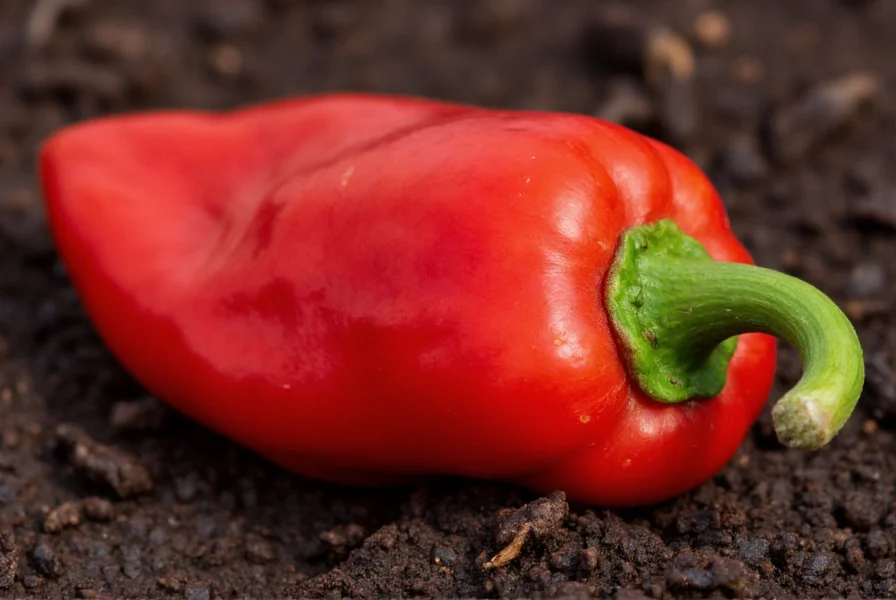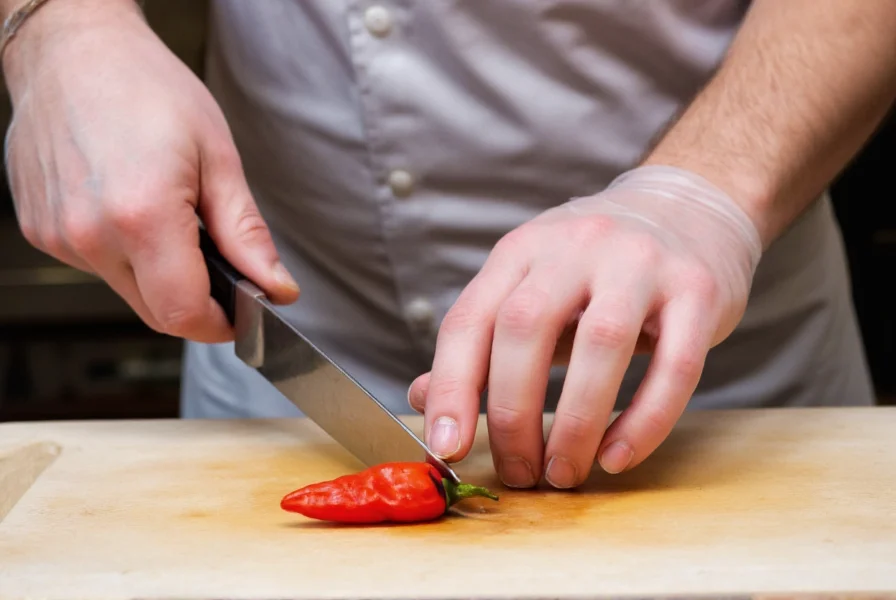The Carolina Reaper isn't just another hot pepper—it represents the pinnacle of chili pepper breeding and continues to captivate growers, chefs, and daredevils worldwide. Understanding this extreme chili requires examining its origins, characteristics, and proper handling techniques to appreciate it safely.
A Brief History of the World's Hottest Pepper
Ed Currie, founder of the PuckerButt Pepper Company, spent years selectively breeding peppers to create the Carolina Reaper. By crossing a Pakistani Naga pepper with a La Soufrière pepper from Saint Vincent, Currie achieved unprecedented heat levels while maintaining complex flavor notes. The pepper gained official recognition when the Guinness World Records certified it as the hottest chili in 2013, measuring between 1.4 and 2.2 million SHU in laboratory tests.

Understanding Scoville Heat Units
The Scoville scale measures chili pepper heat by determining how much sugar water is needed to neutralize the capsaicin (the compound responsible for heat). For context:
| Pepper Variety | Scoville Heat Units (SHU) | Heat Comparison |
|---|---|---|
| Carolina Reaper | 1,400,000–2,200,000 | 280–440 times hotter than jalapeño |
| Ghost Pepper | 855,000–1,041,427 | 170–208 times hotter than jalapeño |
| Habanero | 100,000–350,000 | 20–70 times hotter than jalapeño |
| Jalapeño | 2,500–8,000 | Baseline |
What makes the Carolina Reaper particularly challenging is its delayed heat response—you might experience initial sweetness followed by intense burning that peaks after 30-45 seconds and can last for 20 minutes or more.
Physical Characteristics and Flavor Profile
Despite its fearsome reputation, the Carolina Reaper offers more than just heat. Mature peppers typically measure 1-2 inches long with a distinctive wrinkled texture and a characteristic stinger-like tail. They start green and ripen to a vibrant red, though yellow and chocolate varieties also exist.
Flavor experts describe the Carolina Reaper as having initial fruity, sweet notes reminiscent of cherries or apples before the intense heat sets in. This complex flavor profile makes it valuable for culinary applications when used judiciously.
Growing Carolina Reaper Peppers Successfully
For gardeners interested in cultivating this extreme chili, several factors are crucial for success:
- Climate requirements: Carolina Reapers thrive in warm temperatures (70°-90°F) with high humidity—similar to their South Carolina origins
- Soil conditions: Well-draining soil with pH between 6.0-6.8 works best for carolina reaper chili growing tips
- Watering schedule: Consistent moisture without waterlogging (about 1-2 inches per week)
- Maturation time: 90-120 days from transplanting to full maturity
One common challenge when growing Carolina Reaper peppers is blossom drop during extreme heat. Providing afternoon shade during heatwaves can improve fruit set. Many growers report that stressing the plants slightly (reducing water as fruits develop) can increase capsaicin production and heat intensity.
Safe Handling and Culinary Applications
Working with Carolina Reaper peppers requires serious precautions. The capsaicin concentration is high enough to cause skin irritation, respiratory issues, and even temporary vision problems. Always follow these safety guidelines for how to handle carolina reaper safely:
- Wear nitrile gloves (latex won't protect against capsaicin)
- Use safety goggles to prevent accidental eye contact
- Work in a well-ventilated area or outdoors
- Avoid touching your face during preparation
- Wash all surfaces and tools thoroughly after use
When incorporating Carolina Reaper into cooking, remember that a little goes an extremely long way. Professional chefs recommend:
- Using tiny amounts (1/16th of a pepper or less) for sauces and marinades
- Removing seeds and membranes where capsaicin concentration is highest
- Starting with small quantities and gradually increasing to desired heat level
- Pairing with dairy products (milk, yogurt, cheese) which neutralize capsaicin
Popular culinary applications include hot sauces, infused oils, and specialty dishes where extreme heat is the featured element. Many craft hot sauce makers use Carolina Reaper as the base for limited edition products that appeal to heat enthusiasts.

Health Considerations and Safety Warnings
While moderate chili consumption offers potential health benefits, the Carolina Reaper's extreme heat presents specific concerns. Capsaicin triggers the release of endorphins, creating a "chili high" that many enthusiasts seek. However, consuming excessive amounts can cause:
- Severe gastrointestinal distress
- Temporary breathing difficulties
- Serious stomach irritation
- In rare cases, more severe reactions requiring medical attention
Individuals with gastrointestinal conditions, heart problems, or sensitivity to spicy foods should avoid Carolina Reaper peppers entirely. If you accidentally consume too much, reach for dairy products rather than water—milk's casein protein binds to capsaicin and helps remove it from pain receptors.
Carolina Reaper in Competitive Eating and Culture
The Carolina Reaper has become central to the competitive eating scene, featuring prominently in hot pepper challenges worldwide. These events have sparked debate about safety, with some venues implementing strict protocols including:
- Mandatory waiting periods between attempts
- Required consumption of dairy products afterward
- Medical personnel on standby
- Age restrictions for participants
Despite the risks, the Carolina Reaper's popularity continues to grow, inspiring festivals, cooking competitions, and even breeding efforts to create even hotter varieties. Its cultural impact extends beyond food into merchandise, media appearances, and dedicated online communities.
Frequently Asked Questions
How hot is the Carolina Reaper compared to a ghost pepper?
The Carolina Reaper significantly outpaces the ghost pepper in heat intensity. While ghost peppers measure 855,000–1,041,427 Scoville Heat Units (SHU), Carolina Reapers range from 1.4–2.2 million SHU. This makes the Carolina Reaper approximately 1.5–2 times hotter than the ghost pepper, representing one of the most dramatic jumps in heat between consecutive record-holding peppers.
Can eating a Carolina Reaper pepper be dangerous?
While consuming a Carolina Reaper isn't typically life-threatening for healthy adults, it can cause significant discomfort and temporary health issues. Documented cases include "thunderclap headaches" (reversible cerebral vasoconstriction syndrome) after eating extremely hot peppers. The primary risks come from gastrointestinal distress, potential aspiration if coughing violently, and accidental contact with eyes or sensitive areas. People with certain medical conditions should avoid Carolina Reapers entirely.
What's the best way to grow Carolina Reaper peppers at home?
For successful carolina reaper chili growing tips, start seeds indoors 8-10 weeks before last frost. Transplant to 5-gallon containers or garden beds when daytime temperatures consistently exceed 70°F. Provide 6-8 hours of direct sunlight, maintain consistent moisture (without waterlogging), and consider using a balanced fertilizer with higher phosphorus during flowering. The peppers typically mature in 90-120 days and change from green to bright red when fully ripe. Many growers report better results when slightly stressing the plants as fruits develop.
How should I handle Carolina Reaper peppers safely?
Proper safety measures for how to handle carolina reaper safely include wearing nitrile gloves (not latex), using safety goggles, and working in a well-ventilated area. Never touch your face while handling these peppers, and wash all surfaces thoroughly afterward. If you experience skin irritation, apply milk or a specialized capsaicin removal product. For severe reactions, seek medical attention. Remember that cooking doesn't eliminate capsaicin, so precautions remain necessary during food preparation.
What are legitimate culinary uses for Carolina Reaper peppers?
Beyond novelty challenges, the Carolina Reaper has legitimate culinary applications when used judiciously. Professional chefs incorporate tiny amounts into hot sauces, infused oils, and specialty dishes where extreme heat is the featured element. The pepper's initial fruity notes make it valuable for complex hot sauces, while its intense heat works well in small quantities for marinades and rubs. Many craft hot sauce makers use Carolina Reaper as the base for limited edition products that appeal to heat enthusiasts seeking the carolina reaper scoville units experience.











 浙公网安备
33010002000092号
浙公网安备
33010002000092号 浙B2-20120091-4
浙B2-20120091-4